The Myatanzaung Pagodas
The Myatanzaung Pagodas lie to the north of Laymyetnha Pagoda at a distance of 500 feet. There are two pagodas named Eastern Myatanzaung and Western Myatanzaung. These pagodas are situated on a hillock. 40 feet high. The main structures of these pagodas are constructed of blocks of pure sandstone. But turrets. staircases and walls were built of bricks.
Minsawmon. the King of Mrauk-U Dynasty. erected these pagodas in 1430 A.D. These two are of the same type. measuring 120 feet in circumference. and 50 feet high.
Min Gaung Shwe Tu Pagoda
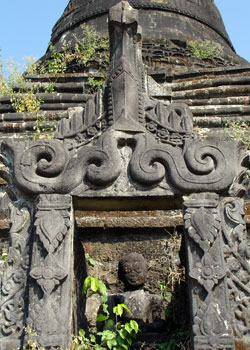 |
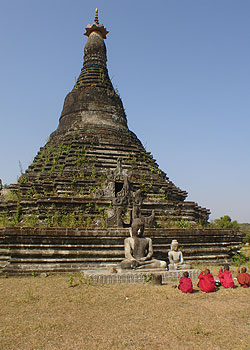 |
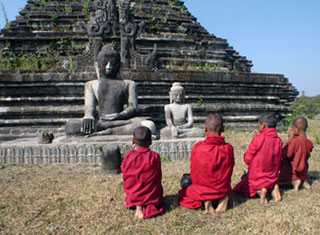 |
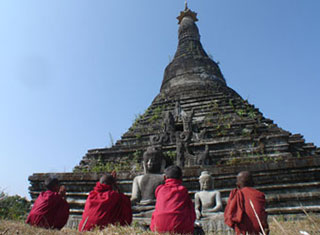 |
The Mokseik Taw Pagoda
To the north of Myatanzaung and at a distance of 300 feet is the Mokseik taw Pagoda. It stands on a hillock. which rises to 100 feet. King Minsawmon erected the pagoda in 1430 A.D. According to the chronicles. Mokseiktaw is also one of the five-city settlement pagodas in the new city of Mrauk-U.
There are two terraces on this hillock. A Pitakataik (Library) is situated on the lower terrace. The library is built of pure sandstone. Most of the monasteries and pagodas of Mrauk-U especially the large teaching monasteries and the pagodas donated by the kings usually had a library attached to them. The height of the main pagoda is 50 feet above ground and 100 feet in circumference at the base. The central pagoda is circular and has a bell shape. A small turret stands on each of the four corners. On the eastern side of the pagoda there is an image of a footprint of the Buddha. 34 inches long. on a large stone. The footprint is plain and the sole of footprint shows neither marks nor any lineaments by which chiromancy could interpret.
Phaya Oak Pagoda
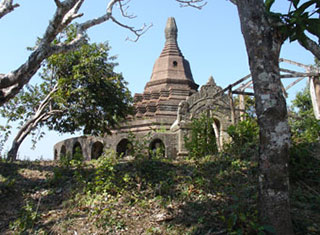 |
 |
The Htuparyon Pagoda
According to the local records. King Minranaung. the sixth king of MraukU Dynasty. erected Htuparyon in 1494 A.D. In the year of 1613 A.D the King Minkhamaung and his chief queen. Shin Htway rebuilt this pagoda. The pagoda is built of stone blocks and the base is octagonal. A wall surrounds the spacious temple court. which is in disrepair. Each of the four corners of the pagoda walls is guarded by the figure of a lion having two bodies and a head. The walls are thought to be the walls of a square sima or of the ordination hall for Buddhist monks.
At present. the pagoda is in ruin. and neglected. But. in the golden days of Mrauk-U the Htuparyon Pagoda was a well known site for pilgrimage. Most of the kings in Mrauk-U Dynasty came to pay respects to this pagoda soon after their coronations. Traditionally. it was believed by the kings that the site was “The Land of Victory and Prosperity”. and was very highly venerated.

Comment (0)